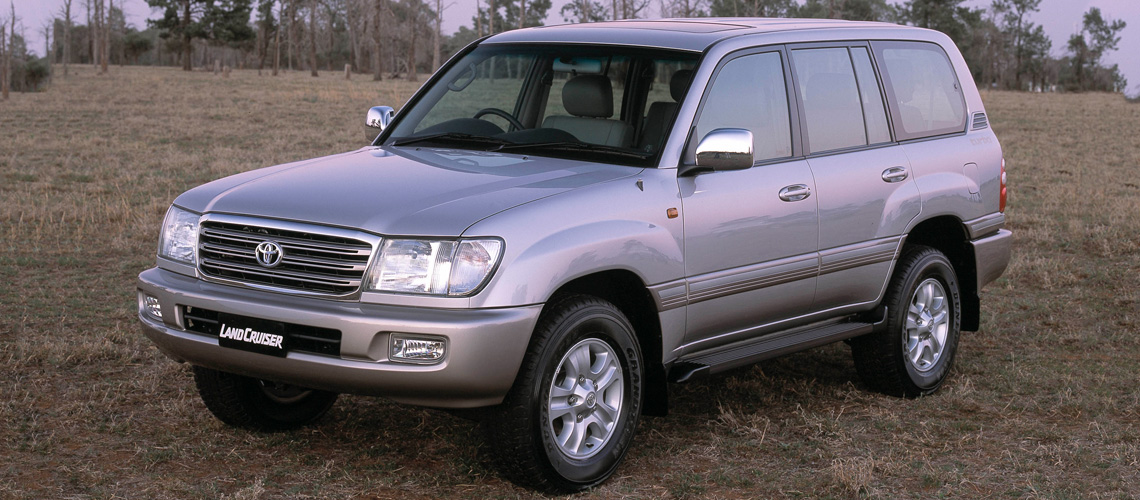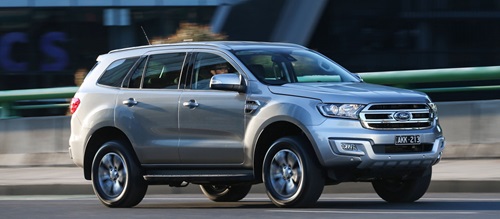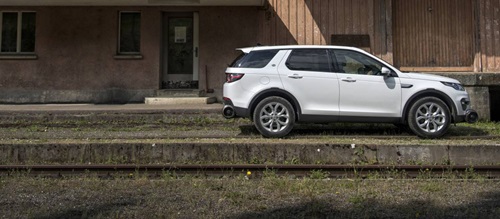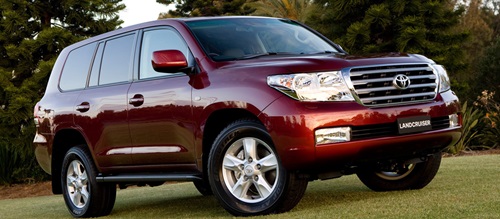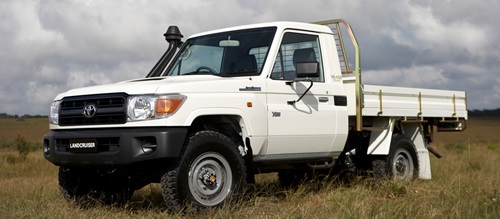Specifications |
|
| Priced from | $64,990 |
| Engine | 4.7-litre V8 |
| Transmission | 5-speed man or 5-speed auto |
| Fuel Economy |
13-20
POOR
|
| Output | 170kW/410Nm |
| ANCAP rating |
Not Tested |
In the face of increased competition from European four-wheel drives, and a new 4.8-litre 185 kW six in its long-time rival the Nissan Patrol, Toyota has fought back with improvements across the board to the 100 Series LandCruiser. V8 power leads the overhaul, which is aimed at making the Cruiser feel less like a truck and more like a luxury wagon.
Value for money
Pricing
Toyota has been very aggressive with prices on the V8 Cruiser. The V8 GXL - the volume seller - is $58,310 with the five-speed manual, or $61,390 with the five-speed automatic.
The Sahara nameplate returns after being dropped with the demise of the 80 Series. The Sahara V8, with a five-speed auto only, is $79,900.
Warranty
Three years/100,000 km, which is average.
Standard equipment
The GXL now has a more generous standard equipment list, which includes airconditioning, ABS brakes, automatic power windows and an in-dash six-stack CD player.
Smart touches include dual sunvisors for the front and side windows, a centre storage bin that's bigger than some car boots, three sunglasses holders and a conveniently placed cruise control.
The V8 Sahara gets the works, including leather upholstery, power front seats, digital satellite navigation, sunroof, traction and skid control and a refrigerated centre console bin.
Retained value
68 per cent after three years for the 4.5-litre six GXL, which is average.
Design and function
Ergonomics
The driver's seat has plenty of travel, but it's a long way off the ground so the side steps can come in handy when climbing in. No seat height adjustment is provided, only height adjustment for the wheel.
The driver faces a typically functional Toyota dash, with clear, concise instruments, ringed by fake metal bezels. The few buttons are big and easy to find.
Vision is good around the car.
Innovation
The main reason for the latest Cruiser upgrade is that it was in danger of being left behind by newer 4WD technology.
Extreme off-road ability - which made the Cruiser's reputation in this country - is today of little importance to 95 per cent of 4WD buyers. The majority expects sedan like luxury, refinement, performance and comfort.
The Europeans - particularly BMW's X5 - and Mitsubishi's Pajero use unitary construction rather than the Cruiser's two piece chassis/body, which gives them significant rigidity, refinement, handling and safety advantages. Independent suspension also provides more secure, responsive dynamics on the bitumen.
The 4.5-litre 165 kW/387 Nm petrol six has been dropped in favour of V8 power - the high tech 4.7-litre 170 kW/410 Nm engine debuted in the Lexus LX470. The 151 kW/430 Nm 4.2 turbo diesel six continues.
An electronic accelerator is now fitted, and a five-speed automatic replaces the four speeder.
Independent front suspension and rack and pinion steering, introduced at GXL level on the 2000 turbo diesel model, are now standard on all Cruisers except the base naturally aspirated 4.2 litre diesel workhorses, which retain the previous model's live axle/ball and nut hardware.
Safety
The new LandCruiser has not yet been independently crash tested, but it should perform well. Weight - all 2.5 tonnes of it - is after all on its side. Two front airbags are standard.
Security
An engine immobiliser and remote central locking are standard.
Comfort
The driver's seat provides reasonable bolstering for the upper body, but the cushion padding is insufficient for big blokes. You also notice the lack of adjustable lumbar support on long drives.
Space and practicality
The 60/40 split middle seat is wide enough for three adults, who sit a bit knees up but still enjoy decent leg room. The two outboard positions provide good upper body support, though the cushion could also use more padding. Three lap/sash belts and head restraints are provided.
Three child restraint anchors (one with a clip) are fitted in the floor immediately behind the middle seat.
The back seats, which fold down from the sides, are tolerable on short trips and fine for young kids, but pretty cramped for adults. Three belts (lap only for the centre) are provided, but two occupants is the realistic limit.
The Cruiser's load area is vast when the rear seats are stowed, and if you don't need them they are easily removed. The middle row double folds forward for rear-seat access and maximum carrying capacity.
Build and finish quality
Excellent, as you would expect from Toyota. On very rough roads, though, a bit of body flex is noticeable. This is not quality related; it's a consequence of the Cruiser's two piece construction.
On the road
Fuel efficiency
The 4.7 litre V8 produces a modest (for its capacity) 170 kW of power. Put this together with the GXL's high weight and lowish gearing in the five-speed automatic, and you have a recipe for a big thirst.
We covered 2,500 mainly country kilometres in the GXL, and the best we could do - flat road, 100 km/h on the cruise control - was in the 13 litres/100 km range. Most country drives will see a return of 16-18 litres/100 km, while in town you'll be doing very well to better 20 litres/100 km, and could easily reach 25 litres/100 km.
Bear in mind that all big 4WD wagons chew petrol. It's a fact of life, which will never change. Tank capacity is 145 litres, and the V8 runs fine on regular ULP.
If you regularly do long distances and/or tow, the 4.2 litre turbo diesel, also available in GXL and Sahara models, is a much more attractive option from this perspective. See our 1000 km test.
Performance
The 4.5 litre six was a fine engine, but although the 32-valve V8's power and torque gains are only incremental its performance is something else again.
It is beautifully smooth and quiet. While 170 kW is still 15 kW shy of the Patrol's 4.8 litre six (and also 10 Nm short of the Nissan's peak torque output), the Toyota engine delivers the goods without raising a bead of sweat.
It feels slightly less muscular at the bottom end than the six, and certainly can't match the turbo diesel's off idle grunt, but this is relative. By absolute measures the V8 has truckloads of torque and its off-road/low range performance is flexible and unstressed.
On the highway, the auto has the V8 ticking along in silence at 100 km/h/2100 rpm in fifth.
Under acceleration, it pulls hard at 2000, then lifts at 3000 to spin sweetly to the 5000 rpm redline. The zero-100 km/h trip in the auto takes 11.8 seconds - not bad for a lump of nearly 2.5 tonnes.
The five-speed auto is as refined as the V8. In normal driving, shifts segue almost imperceptibly into each other.
If you want to use it manually, in towing or difficult off-road terrain, the L/2, 3/4 and 4/D ratio sets are paired so that you can shift from one ratio to the other in a single plane. A more pedal responsive power mode, plus second gear starts, are accessed via a pair of buttons next to the main lever.
Ride
The addition of independent suspension at the front has improved ride comfort. The GXL is compliant and comfortable on all surfaces, with the ability to soak up rough stuff with ease. When laden, there is some rear end bounce on undulations.
Handling and steering
A wagon of this size and weight is always going to be a ponderous device, but the IFS/rack and pinion upgrade at the front end give the new Cruiser much tidier dynamics.
The steering is relatively responsive and accurate, though still remote. Around town at low speeds, the variable ratio rack reduces wheel effort in tight turns.
The new GXL is also more stable at highway speeds and when cornering on rough surfaces. Body roll is reasonably well controlled, and the 275/70 Dunlop Grand Treks (on 16 inch steel wheels) offer decent grip.
On dirt roads, the softly sprung back end can become a bit twitchy on corrugations. When fully laden the damping also fades, causing some bounce on bumps.
Off the beaten track, the torsion bar IFS provides less articulation than the coil sprung live axle, so it's easier to hang a wheel in the air. 4WD purists will also lament the unavailability of optional front and rear factory diff locks on the new GXL - locking the centre diff is now the last resort if you're about to get stuck.
At least the underslung spare is now again secured by a chain, rather than a thin cable. The bloke at the Birdsville garage reckons he finds heaps of LandCruiser spares in the Simpson.
Braking
The ABS brakes are fine in normal use, but take a while and require a solid shove to pull up this much weight. The ABS is calibrated for minimal intervention on dirt.
Smoothness and quietness
Outstanding. This is the area of greatest improvement on the new model. Its refinement is almost in the luxury class.
Summary
Toyota has done a great job with the new 100 Series LandCruiser, achieving substantial improvements in most areas yet, in the case of the GXL, keeping prices at the level of the previous model. It has a fraction less off-road ability, but on the tarmac is far superior to its predecessor. The V8 GXL is also excellent value for money - though the fuel bills will be expensive.







